
Journalistic Investigation: Who is Behind the Abduction and Brutal Murder of Syrian Christian Hierarchs from Aleppo?
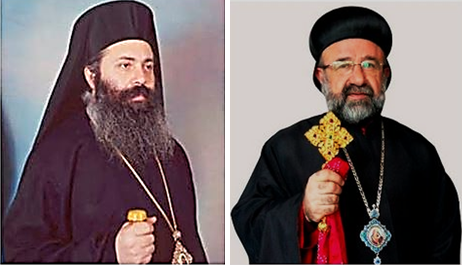
Metropolitan Boulos Yaziji and Metropolitan Yuhanna Ibrahim
Mansur Sahib with Nadine Martin, Klaus Ulbricht, and Fatih Mehmetoglu- OCP News Service – 12/1/2020
Abduction and Brutal Murder of Syrian Christian Hierarchs (download PDF File)
The events of this investigation occurred more than six years ago. However, the incident is still shrouded in mystery and periodically appear in the world media headlines.
Background
Back in 2013, two inconspicuous men dressed in discreet grey clothes were talking peacefully in the back seat of a battered Toyota pickup truck moving from Aleppo to the Syrian-Turkish border. Only a few people knew about the details and purposes of the trip.
According to a legend, on April 22, 2013, the Greek Orthodox Metropolitan Paul Yazigi (the younger brother of the Patriarch of Antioch and the whole East, John X) and the Syriac Orthodox Metropolitan John Ibrahim went to Turkey to collect humanitarian aid for the needs of Christians in Aleppo. Hard, turbulent times have come in Syria, and any information about their real mission could lead to the failure of all previous agreements.
Where did the two Metropolitans Yazigi and Ibrahim go? For about a year, our investigative team has been collecting and analyzing information bit by bit, tried to figure out the mysterious events connected with the abduction and martyrdom of the highest Syrian clergy representatives.
Having compared the events related to the Metropolitans’ abduction, including data that had been obtained by the media outlets and our sources in Syria, as well as the opinions of several religious communities on this issue, we could detect their real intention. Paul Yazigi and John Ibrahim were aimed to rescue from captivity two of their other brothers in the faith — the Armenian Catholic priest Michael Kayyal and the Greek Orthodox priest Maher Mahfouz who had been abducted on their way to the monastery in Al-Kafrun and had been held in the Kfar Dael village.
Priests abducted in February 2013
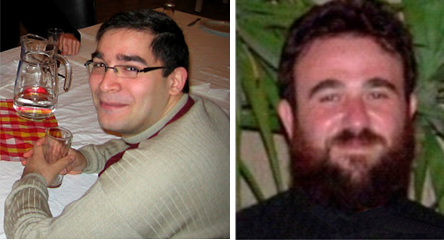
M.Kayyal M.Mahfuz
The following events were shrouded in mystery. It turned out that Metropolitans’ expectations were not destined to come true. By the will of God, priests’ car was stopped by unknown militants on the road from Aleppo to Kfar Dael. They were forced to get out of the vehicle. The driver, Deacon Fatha’ Allah Kabboud, was shot on the spot. The bishops were captured, suffering for the faith and Christ.
Their martyrdom was predetermined long before the abduction, at a time when George Sabra, the head of the Syrian opposition, met with representatives of the U.S. and Turkish special services. The church has always stood guard over statehood in an attempt to reconcile the people of Syria. Besides, Aleppo still resisted jihadist sentiments. It significantly interfered with the plans of the United States and the Syrian opposition to destabilize the situation in the country.
Americans wanted Sabra to take decisive and vigorous actions, provocations and increased pressure against all layers of Syrian society to exacerbate interfaith contradictions in the country. The result of the meeting was the implementation of Sabra’s plan to abduct two ordinary priests (M. Kayyal and M. Mahfuza) by the Katibat al-Muhajeerin group, who then became the bait for the higher-ranking bishops.
It was not difficult to lure Metropolitans Paul Yazigi and John Ibrahim into a trap. They were extremely concerned about the increasing attacks on the priests of their churches and tried to counter this with all available means. The abductors took advantage of the sense of duty, active missionary activity and the self-sacrifice of the Metropolitans.
The curator of the first phase of the operation (let’s call it “abdication”) was MIT (Turkish intelligence service) officer named Abu Jafar (the name turned out to be fictitious). The media associate with him the abduction of the metropolitans, but this is not entirely true. Abu Jafar was in charge of communications with the Katibat al-Muhajeerin. With his help, in February 2013, this group also attacked M.Kayyal and M.Mahfuz, who eventually became the bait for the bishops. Jafar’s participation in the subsequent phases of Sabra’s plan is not confirmed.
The crucial role in the first abduction was played by a native of the Russian republic of Dagestan Magomed Abdurakhmanov, better known as Abu Banat. After two metropolitans were captured, he dealt with Kayyal and Mahfuz. The militants no longer saw the need for them. At the end of 2013, Abu Banat fled to Turkey, where he was arrested and sentenced to 7.5 years in prison for terrorism.
The second stage of the operation was more sophisticated and meant disinformation of the highest clergy of Aleppo — bishops P.Yazigi and J.Ibrahim. The militants of the Nour al-Din al-Zenki movement, another jihadist group from the Free Syrian Army, needed to convince the Metropolitans through their proxies of the possibility of rescuing M.Kayyal and M.Mahfuz from prison and forcing them to go for the prisoners personally. Unfortunately, the Islamists succeeded. It was Nour al-Din al-Zenki militants, who abducted, detained, brutally tortured and executed two bishops. Here’s how we managed to find it out.
Yohanna Ibrahim’s nephew and Executive Director of the Sweden-based Assyrian Monitor for Human Rights Jameel Diarbakerli whom we managed to get in touch confirmed our guesses. “The abduction was well planned and performed. The area of operation was a hotbed of foreign special services. It is unlikely that ordinary terrorists could do this. Very little information on the fate of the bishops, the terrifying silence of the media and spiritual environment for more than six years confirms these thoughts,” Diarbakerli said. He also characterized this situation as mystical and didn’t believe in Metropolitan salvation.

Email correspondence with Jameel Diarbakerli
Trying to resolve this issue, we started to analyze all the facts, versions, and motivations of the militants. This phase was the most complicated in the investigation as the information on their missing was controversial, and it wasn’t clear who stood behind the abduction. However, the detailed examination of facts helped us to establish the course of events that are provided below.
Bishops fate alternatives and performers
The messages on bishops’ fate have aroused just after news on kidnapping been announced. Middle East Christian Association, for example, said the Greek Orthodox Metropolitan of Aleppo Paul Yazidzhi and the Syriac Orthodox Metropolitan of Aleppo John Ibrahim are at large, allegedly have safely arrived in the Cathedral of Saint Elijah.
The US-based Zenit news agency spread the fake news on the liberation of the bishops. Moreover, the Association for humanitarian and pastoral support in Rome stated that the UN Special Envoy to Syria Lakhdar Brahimi, the Greek Foreign Ministry, and the Russian Orthodox Church took part in the negotiations on their release. Later, the Greek Orthodox Church of Antioch and the Syrian Orthodox league refuted this information.
Later, in an interview with the Spanish EFE News Agency, the Chairman of Habib Ephrem said that the bishops had not been released, and none of the terrorist groups claimed responsibility for the abduction. Most likely, the radicals realized the possible consequences and responsibility for the heinous crime.
In addition to church representatives, the information was commented by several politicians and public officials. In August 2013, the British Foreign Ministry representative, referring to the words of U.S. Congressman Charlie Dent, stated that “the armed groups of the Syrian National Council and the Muslim Brotherhood detain bishops in Turkey.”
Since then, the events involving the disappearance of two priests have not changed. In April 2019, the representative of the Syrian Orthodox Church in Germany Samuel Gümüs told the Lebanese newspaper al-Akhbar that “the archbishops are held as prisoners by the jihadists of the Islamic State somewhere in Baghuz).” However, this version has never been confirmed.
Having studied the alleged route of the metropolitans Paul Yazigi and Gregory John Ibrahim from Aleppo, as well as any information concerning the purpose of their journey, we localized areas of a possible abduction. However, we knew nothing about the attackers. Who was behind the crime? And what were the motives?
Three main motives of the crime
The investigation was compounded by the fact that the abductors did not make any demands. This made it very difficult to establish real causes for their criminal behavior. Several officials and religious leaders speculated on the reasons for the abduction. The Greek-Melkite Archbishop of Aleppo Jean-Clément Jeanbart noted: “the Orthodox and Catholic churches both take great pains to contact the abductors. But we still can’t understand who these people are, as well as their motives.”
We also assumed that the Islamists wanted to trade Yazigi and Ibrahim for Syria’s opposition leaders. Due to their active preaching, missionary and humanitarian activities in the province, the choice of terrorists fell on them. However, we haven’t found any evidence in favor of this motive.
Perhaps, Paul Yazigi and Gregory John Ibrahim were abducted by mistake. The priests could be perceived as Syrian politicians who often choose a similar route.
Having made their way to the area controlled by the Syrian army, the militants could set up an ambush to subsequently receive a ransom for captured officials. Instead, they captured the highest hierarchs of Aleppo. Frightened by Assad’s reprisals, they delivered these two priests to a more influential opposition group.
This version was shared by the Chaldean Bishop of Aleppo Antoine Audio. “The main motive of those criminals who abducted Christian hierarchs in Syria was money, not religion. For instance, the priest, Father Hassan, who was captured in southern Syria, was released after his relatives paid a ransom of 100 thousand dollars”, said Antoine. However, the absence of any demands from the abductors makes this version impossible.
As a result, the most likely motive is the use of hierarchs for ideological purposes and abdication of Paul Yazigi and Gregory John Ibrahim, who had called for a dialogue with the Syrian government. The conversion of the higher clergy to another religion on the eve of the main holiday of all Orthodox Christians — the day of the Resurrection of Christ (Holy Week) — could undermine the Syrian Orthodox confidence in their church, which also has been fighting against terrorism since 2011. The abdication could have prompted Christians to leave Syria. Some experts also voiced this version.
According to News Israel, Syrian human rights defenders consider the “incident was aimed at provoking a conflict between Muslims and Christians, and the Free Syrian Army, which the kidnappers allegedly belonged to, intended to impose extremist Islam.”
We will not disclose all our sources for obvious reasons. Still, we should note the help that has been provided to us by representatives of the Syrian Orthodox community in Turkey. They kindly agreed to answer a few questions.
According to the community, these two archbishops are the spiritual pastors of Aleppo. They hold significant positions in their churches which are of great importance for Orthodox Christians in the Middle East. “They were kidnapped to intimidate Syrian Christians and force them to leave the country.”
The militants, as Syrian Christians said, forced the bishops to abandon Christianity but could not achieve this aim. The community claims that “Paul Yazigi and John Ibrahim were beheaded for their unwavering faith. Their renunciation of Christ could have a real negative effect on the Antioch and Syrian Orthodox Church, and the organization that organized the kidnapping knew about this situation.”
Anyway, analyzing all possible versions of the incident, the motives of the abductors and the fate of the metropolitans of Aleppo, we established some details of the crime, and it allowed us to restore a complete sequence of events related with the abduction.
Yasser Muhdi, one of the militants who had guarded Paul Yazigi and John Ibrahim in custody, helped us to restore the chronology of events. He claimed that the names of the bishops had been changed and only a limited circle of people had known their real names. Muhdi was captured by the Syrian forces during the liberation of Khan Sheikhun after he had escaped from the Nur ad-Din al-Zenki. The official investigation is not yet completed because it is not possible to find the remains of the clergy. This became known due to sources in the Syrian Arab Army on the condition of anonymity.
Special thanks are also worth expressing to the member of the Assyrian-Chaldean Syrian Association in Sweden, Ozkan Kaldayo who provided contact information of Jamil Diarbakerly. Ozkan is Jamil’s uncle, and he is more than anyone else aware of bishops’ fate.
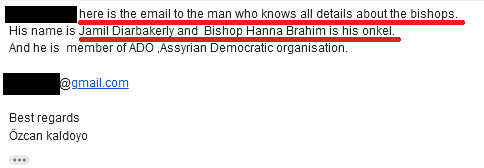
Email correspondence with Ozcan Caldoyo
Chronology of events
In April 2013, the situation in Aleppo remained tense. There were fierce battles between opposition groups and pro-government forces in the city.
At that moment, Kfar Dael has been under control of opposition representatives from Nur al-Din al-Zenki. This is evidenced by the statement of the group field commander (he could be Abu Hassan which had been responsible for the massacre of the Metropolitans) in January 2013, as well as its flag on the bakery building in this locality, as could be seen in the propaganda video dated August 2013.
It is also worth noting that the Nur al-Din al-Zenki movement was one of the most active units in the Free Syrian Army located in Aleppo. There is evidence that the group received financial assistance from the United States as part of the CIA program to support “moderate opposition rebel groups.”
Amnesty International NGO confirms our version of what happened. Moreover, the organization claims that the Nur al-Din al-Zinki movement,16th Division, the Levant Front and Ahrar al-Sham groups were involved in the abduction, imprisonment, torture, and execution of not only hierarchs Paul Yazigi and John Ibrahim, but also journalists and humanitarian workers from 2013 to 2016.

A part of Amnesty International report
Events that took place on April 22, 2013
4:07 PM. Toyota pickup truck driven by Deacon Fatha’ Allah Kabboud stopped at the gates of the Chancellery of the Greek Orthodox Church.
The Chancellery was located next to Saint Elijah Cathedral and Saint Ephrem Cathedral in the area controlled by the Syrian government. This obstacle helped us to establish the course of events that occurred on April 22, 2013.
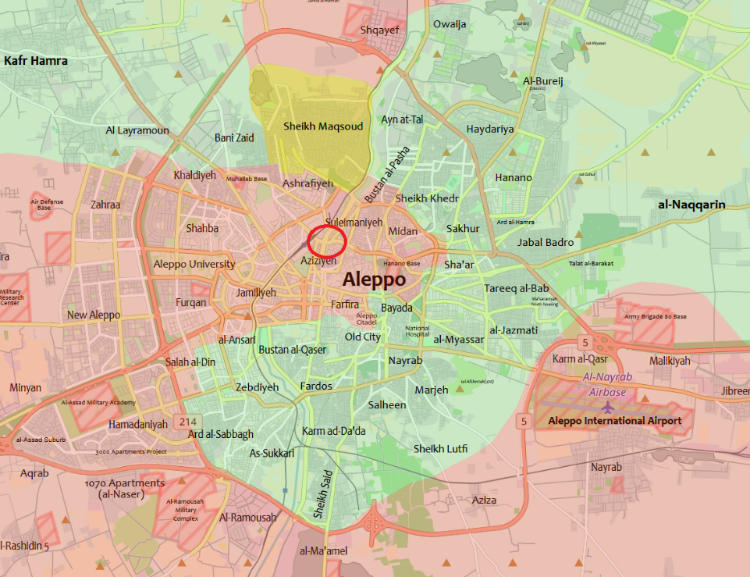
The location of the Chancellery of the Greek Orthodox Church and Saint Ephrem Cathedral
4:10 PM. Metropolitan Paul Yazigi left the Cathedral and instructed Deacon Fatha’ Allah Kabboud to move towards Saint Elijah Cathedral. The Deacon had to find an inconspicuous pickup truck and get it ready for the trip in advance, but the purpose of it was unknown to him.
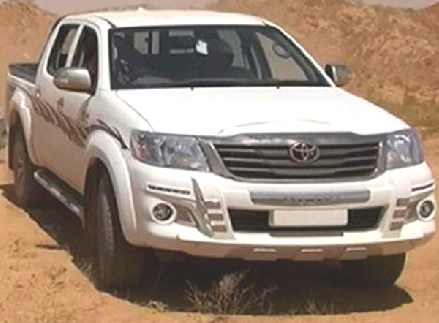
The bishops used pickup truck like this to leave Aleppo
4:20 PM. Toyota pickup truck pulled up to Saint Ephrem Cathedral in Aleppo, where Paul Yazigi met Yohanna Ibrahim. The Metropolitans entered the Cathedral and prayed for the early release of the previously captured priests. There was a certain agreement between the Metropolitans on the joint departure from the walls of the Cathedral after the prayer.

The route of Paul Yazigi to Yohanna Ibrahim (800 meters)
4:21 PM. Paul Yazigi entered Ibrahim’s Cathedral, but the driver stayed outside.
It also became known that a representative of the militants also took part in the ‘rescue operation’. He had to ensure the smooth passage of roadblocks in territories that were outside of Government control. The militant was also responsible for the transfer of hostages in exchange for ransom in case of success.
5:04 PM. One of the Cathedral novices told us that two inconspicuously dressed metropolitans had left the Cathedral accompanied by an unidentified man and got in the car (the representative of the militants who arrived at the Cathedral in advance).
The militant sat beside the driver and showed the way. However, according to the plan of radicals, he had to lower Metropolitan’s guard and bring them to the checkpoint, where they were captured, and the driver killed. April 22 was not chosen by chance. Precisely that day there was no church service, and it let the priests lo leave the Cathedral almost unnoticed.
5:06 PM. The car with Metropolitans departed from the Cathedral.
5:26 PM. The pickup truck reached the outskirts of Aleppo.

The route of Metropolitans from the meeting point to the ambush site
At approximately 6 PM the pickup truck reached an impromptu checkpoint in the area of Kfar Dael, where the terrorists usually collected fees for a pass. The representative of the militants left the pickup truck, thereby signaling the armed radicals to act. The attack was carried out by a group of militants exactly at the checkpoint where the representative of the Islamists had to organize unhindered entry into the territories of radicals. The pickup was burned to leave no evidence.
The location of the checkpoint was quite good as it was set up on the hill, and the militants could completely control the crossroads.
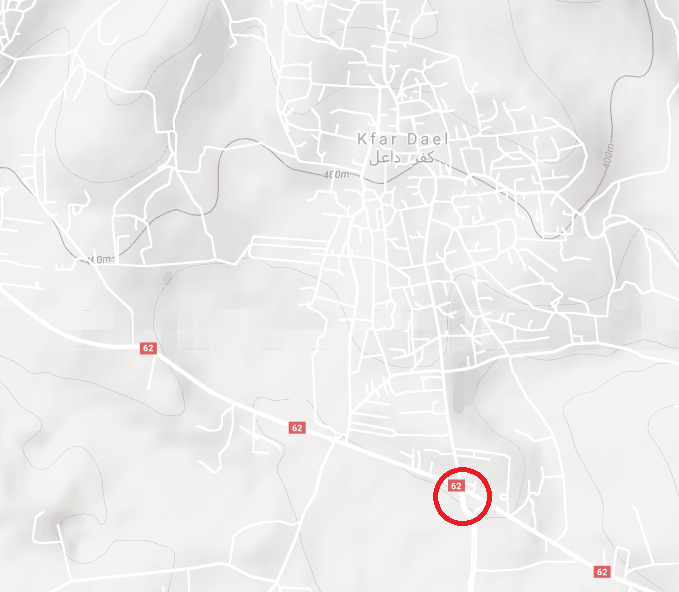
Location of the checkpoint

The checkpoint at the crossroads
The proximity to the battlefront helped the militants to conceal the use of firearms, and the inclement weather contributed to poor visibility, which reduced the prospects of the operation being uncovered.
According to Weather History, on April 22, 2013, the weather in Aleppo was rainy and cloudy, and this fact considerably facilitated the plan of the militants.
During the interrogation, Yasir Muhdi told the Mukhabarat members what happened after the Metropolitans had been captured. Following the priests were seized by the Nour al-Din al-Zenki militants who conveyed them to Mashad village. The settlement is located northwest of Aleppo (about 45 minutes’ drive from the village of Kfar Dael).

The route of the militants from Kfar Dael to Mashad village
Notably, the radicals didn’t use its well-known Al Qassemii prison and transferred the priests to the area where the Nour al-Din al-Zenki movement had been formed. Most likely, they took extra precautions.

The area of Al-Zenki formation influence
Captivity
The metropolitans were brutally tortured while being imprisoned by the Islamists. First, they cut tendons on their feet, so the priests could not run far. Then they were deprived of sleep, food, water, and were beaten continuously. The radicals also cut off pieces of skin from their bodies, drowned in barrels trying to force them to convert to Islam. After a torture one of the bishops nearly died, so the militants had to take him out to Turkey for the rehabilitation temporarily.

Antakya Devlet Hastanesi
Yasir Muhdi also said that the Metropolitan had been taken to Antakya Devlet Hastanesi in Hatay border province. One of the Free Syrian Army field commanders was also treated in this hospital in 2015. After a long search, we managed to get in touch with one of the employees of this medical institution, who anonymously agreed to disclose some details for a small fee.
Email correspondence with the hospital’s employee
It turned out that in early 2015, an older man got to the hospital, and he was kept in a separate room on the top floor. Armed people were always on duty in front of its entrance. The patient was delivered in critical health condition, and he urgently needed a blood transfusion. The body of the man was bruised, two fingers on his left hand were chopped, and the knee joint of the right leg was completely fractured. Two weeks later, he was covertly taken out at night, and his fate is unknown to the employee.
Only after a conversation with the hospital employee, we realized that in 2015 the Grand Mufti of Syria Ahmad Badreddin Hassoun in one of his sermons provided accurate information. He announced that Paul Yazigi was secretly exported from Syria to Turkey.
Tragic end
In late 2016 when the Syrian Arab Army was successfully liberating Aleppo neighborhoods, and most of the militants were transported by green buses to the north-west of the country, the abductors felt danger. By that time, the bishops had been in captivity for more than three years. The liberation of Mashad village could have severe consequences for Al-Zenki and their Western patrons. Various Syrian special services were looking for the Metropolitans, as their freedom was a matter of principle. If the priests had been found in this settlement, the militants would have been shot without a trial.
That’s why in early December 2016, without having achieved the conversion of Islam by the priests, and realizing the difficulties with their further transportation to the other part of the country one of the Al-Zenki field commanders (according to Yasir Muhdi it was Abu Hassan) decided to shoot the bishops and covertly bury their bodies. The searches of the Metropolitans had been lasting for several years throughout Syria, but in the end, they were imprisoned in 35 kilometers from Aleppo.
When Greek Foreign Minister Dimitris Avramopoulos in 2013, talked on the phone with the leader of the Syrian opposition, George Sabra, the latter promised in every possible way to facilitate the release of the Orthodox bishops, who at that time could be released. However, Sabra already did not plan to provide any help to the Greeks. The opposition had completely different plans for the bishops.
The Metropolitans Paul Yazigi and Yohanna Ibrahim were killed for the Orthodox faith by the Nour al-Din al-Zenki militants who for a long time have been financed and supported by the West. The persistence and steadfastness of these priests place them within the range with other national heroes of Syria, who gave their lives for the glory of their homeland.
This article was first published on Medium.
Disclaimer: The views and opinions expressed in this article are those of the authors and do not necessarily reflect the official policy or position of Orthodoxy Cognate PAGE or OCP Media Network.
Source:
Mansur Salib





466237 803310Hello. Excellent job. I did not expect this. This really is a outstanding articles. Thanks! 771026
[…] Journalistic Investigation: Who is Behind the Abduction and Brutal Murder of Syrian Christian Hierar… […]